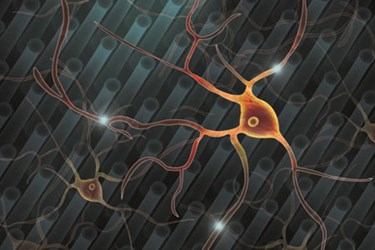Silly Putty Impacts Stem Cell Research
By Joel Lindsey

A team of researchers at the University of Michigan has found that the physical environment in which embryonic stem cells are grown plays a crucial role in the type of specialized cells they eventually become.
In particular, researchers discovered that the use of a spongy “carpet” made out of a key ingredient in Silly Putty could significantly improve the growth of stem cells that eventually turn into working spinal cord cells.
“This is extremely exciting,” Jianping Fu, assistant professor of mechanical engineering and researcher on the project, said in a press release published recently by U-M. “To realize promising clinical applications of human embryonic stem cells, we need a better culture system that can reliably produce more target cells that function well. Our approach is a big step in that direction, by using synthetic microengineered surfaces to control mechanical environmental signals.”
In the experiment, researchers used “posts” of polydimethlysiloxane — a key component of Silly Putty — as threads to create carpets of varying degrees of sponginess. Shorter posts created a stiffer carpet, while longer posts created a softer, plusher carpet.
After 23 days of growing stem cells, scientists found that those grown on the softer carpets had developed into spinal cord cells that “were four times more pure and 10 times larger than those growing on either traditional plates or the more rigid carpets,” according to U-M’s statement.
Researchers involved with the project hope that the ability to influence the differentiation process of stem cells as they develop into specialized cells might eventually help improve therapies for diseases like amyotrophic lateral sclerosis (ALS or Lou Gehrig’s disease), Huntington’s, and Alzheimer’s.
Eva Feldman, the Russell N. DeJong Professor of Neurology at U-M, is also involved with the project. As a researcher who studies ALS, Feldman hopes to eventually use the technique as a way to grow healthy neurons using an ALS patient’s own cells.
“Professor Fu and colleagues have developed an innovative method of generating high-yield and high-purity motor neurons from stem cells,” Feldman said. “For ALS, discoveries like this provide tools for modeling disease in the laboratory and for developing cell-replacement therapies.”
The research team recently published the findings from its experiments in the journal Nature Materials. According to U-M’s press release, this study is the first to directly link physical environment, instead of chemical interaction, to the growth, development, and differentiation process of human embryonic stem cells.
“Our work suggests that physical signals in the cell environment are important in neural patterning, a process where nerve cells become specialized for their specific functions based on their physical location in the body,” Fu said.
Image credit: Ye Tao, Rose Anderson, Yubing Sun, and Jianping Fu
